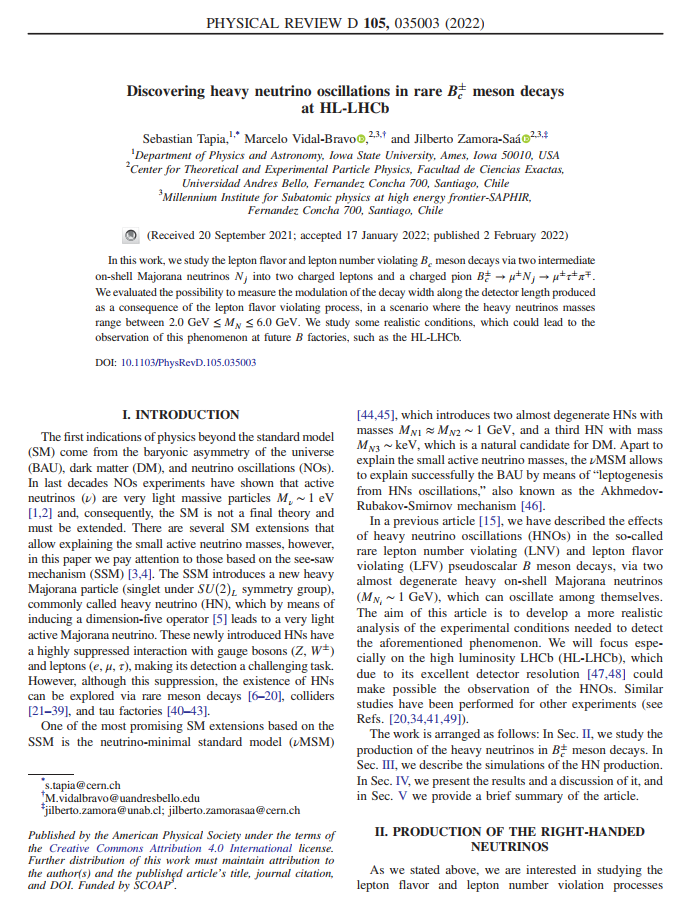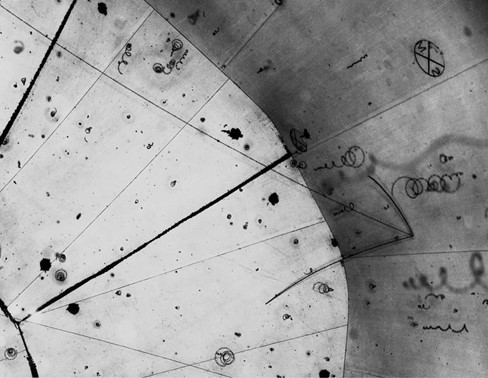If the existence of heavy neutrinos is demonstrated, it could expand the standard model of particle physics and explain the fact that the known neutrinos have mass (something the standard model cannot explain). The oscillation of heavy neutrinos could also play an essential role in the matter-antimatter asymmetry of the universe.
By Jorge Román
Cover image: first detection of a neutrino. Credits: Argonne National Laboratory. Source: Flickr.com
A research team from the Saphir Millennium Institute, integrated by Jilberto Zamora (Saphir associate researcher and academic at Universidad Andrés Bello), Marcelo Vidal (Zamora's student at Universidad Andrés Bello) and Sebastián Tapia (researcher at Iowa State University), published a paper in the journal Physical Review D in which they give clues as to how heavy neutrino oscillations could be observed in experiments under development at the Large Hadron Collider (LHC), in particular the high-luminosity LHCb high-luminosity.
The existence of heavy neutrinos is a hypothesis that would explain the fact that the neutrinos known today and already detected have mass (although their mass is very, very small). If the hypothesis proves to be true, it would allow to expand the standard model of particle physics. In addition, the oscillation of heavy neutrinos could play an important role in the matter-antimatter asymmetry of the universe (which is another anomaly of the standard model). The problem is that this hypothetical particle is extremely difficult to detect.

Marcelo Vidal, Jilberto Zamora and Sebastián Tapia are the authors of this publication that gives clues on how to detect heavy neutrino oscillations in the future high-luminosity LHCb.
However, the research by Zamora, Vidal and Tapia suggests that it would be possible to detect the heavy neutrino oscillation (and thus prove its existence) by observing the decay of certain B mesons in the LHCb experiment (one of the four large LHC experiments) when the High-Luminosity LHC is operational (projected for 2027). According to the authors, heavy neutrino oscillation could be observed if a thousand interaction events between heavy neutrinos and the decay of B mesons are detected.c. And, if this new particle were to be discovered, it would undoubtedly be a huge breakthrough in the understanding of the subatomic world.
Vidal, Zamora and Tapia's research was published in the journal Physical Review D and is available here. available here.


